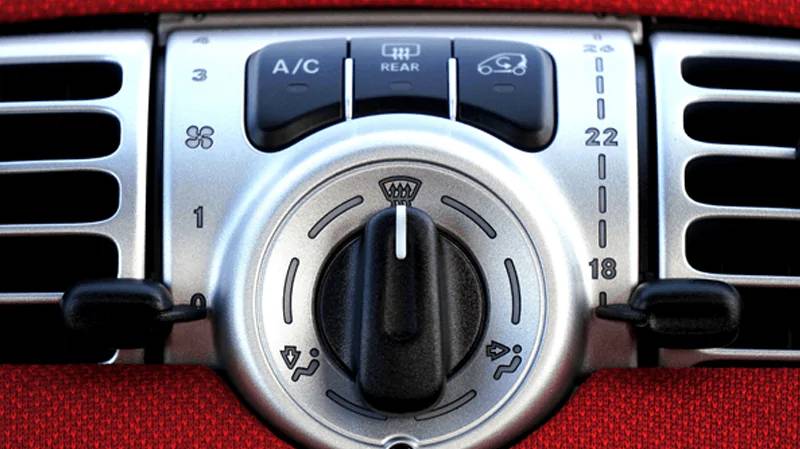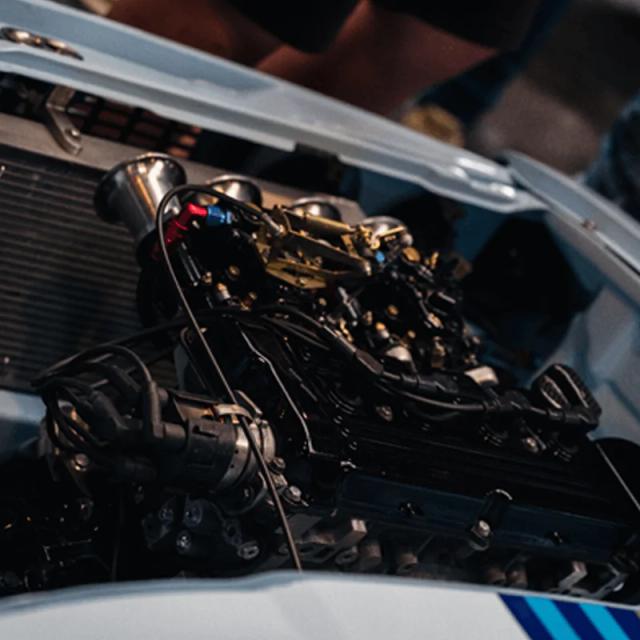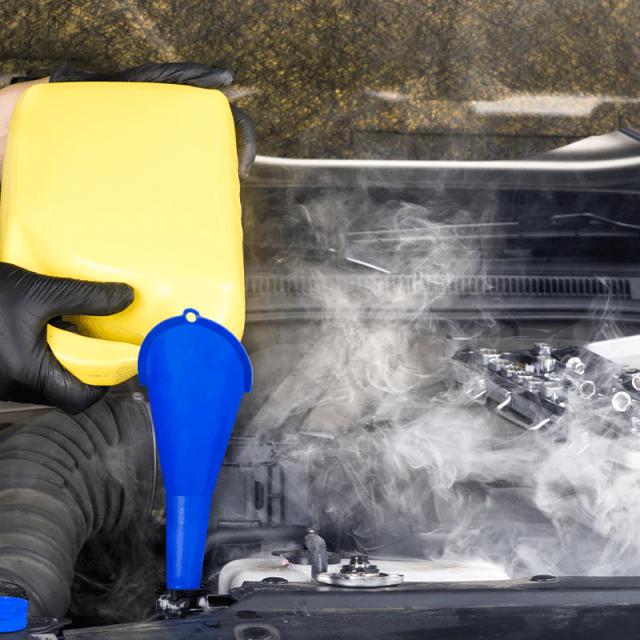
Car thermostats play a vital role in regulating the temperature of your vehicle's engine. Without a fully functioning thermostat, the engine will be at risk of running too hot or cool, which can cause serious – and potentially expensive – problems. So, if you think you might have a faulty thermostat on your hands, it's critical to get it sorted as soon as possible.
In this guide, we'll explain how thermostats work in more detail, including what happens when they get stuck open or closed. We'll also talk you through the process of how to change a thermostat in case you need a complete car thermostat replacement
To find the correct car thermostat replacement for your vehicle, just head to our car thermostat section and enter your reg or make and model, and we’ll do the rest.
How Do Car Thermostats Work?
What Happens When the Car Thermostat Fails?
3 Signs of a Faulty Thermostat and How to Spot Them
How to Change a Car Thermostat in 10 Simple Steps
Car Thermostat Know-How
How Do Car Thermostats Work?
Most vehicles with water-cooled engines need to maintain a consistent temperature to operate efficiently: this is between 75°C to 104°C for most makes and models. The car thermostat ensures the engine stays at the optimum running temperature by regulating the coolant flow between the radiator and the engine.
The thermostat sits in a car thermostat housing and works by opening or closing a valve to control the coolant flow to maintain the right temperature. It uses a special temperature-sensitive valve with a wax mechanism inside it.
As the engine warms up, the coolant inside it gets hot, and the wax inside the valve expands and melts in the heat. This pushes a small bar that splits the centre plate from the mounting base and opens the valve, allowing the coolant to circulate through the car radiator, dispersing the heat. The coolant then flows back into the engine, cooling it down and stopping the car from overheating.
Once the temperature in the engine drops, the wax shrinks again, closing the valve and shutting off the flow of coolant to allow the engine to warm up again. In this way, the thermostat ensures that the engine never gets too hot or cool, ensuring optimum performance.
What Happens When the Car Thermostat Fails?
When the thermostat fails, the flow of coolant into the engine will no longer be regulated properly. So, it won't be long until the engine becomes too hot or too cold – and in some cases, it may even start to fluctuate rapidly between the two.
Whether the engine will overheat or underheat depends on whether the thermostat is stuck in the open position or has jammed shut.
If the thermostat is stuck in the closed position, the coolant will be trapped inside the engine. It will soon get very hot, causing the engine to overheat. In the worst-case scenario, this could seriously damage or melt crucial engine components and cause total engine failure.
If the thermostat gets stuck in the open position, the coolant may run continuously through the engine, causing it to run too cold. An overcooled engine is much less efficient than one running at the optimum temperature, which can dramatically affect fuel efficiency. Engine parts will also wear out more quickly, and the cabin will not heat up properly, even with the heater on.
A car thermostat may fail for any number of reasons. Still, the most common causes are problems with the water pump, car radiator, or a damaged drive belt. And if this happens, it won't be long until you start to experience a few issues with your coolant system and engine.
3 Signs of a Faulty Thermostat and How to Spot Them
A faulty car thermostat can be severe. It can even take out your entire engine, so it's crucial to recognise the signs that your car thermostat isn't working correctly. Here, we've shared the three most common symptoms of a bad thermostat.
Please note: The cooling system can be quite complex, so while the signs described below indicate that the car thermostat is defective, there may also be other causes. If you have difficulty diagnosing the issue, speak to a qualified mechanic.
Very High Engine Temperatures
If the engine gauge shows extremely high running temperatures – especially within the first fifteen or twenty minutes of driving – it could be a sign of a problem with the thermostat. For vehicles that don't have an engine temperature gauge, the high engine temperature symbol may be illuminated on the dashboard. You can check what this symbol looks like for your car in the owner's manual.
Fluctuating Engine Temperature
If the thermostat is faulty, you may find that the engine temperature fluctuates rapidly between hot and cold. One minute, your engine temperature gauge may be in the red, and then the next, it will have dropped dramatically. This usually indicates that the thermostat has developed a fault preventing it from opening and shutting at the right time.
Coolant Is Leaking From Near the Thermostat
If the thermostat becomes stuck in the closed position, the pressure can build up inside the coolant lines, and coolant may start to leak out of the system – especially in the area just around the thermostat. You may notice a patch of coolant forming underneath your car.
If left untreated, a leak will cause the engine operating temperatures to rise. The fluid can also cause the surrounding engine parts to corrode or rust, which may be costly to repair if not caught early.
How to Change a Car Thermostat in 10 Simple Steps
To replace a car thermostat, you'll need the following parts, tools, and accessories:
A replacement thermostat: This must be the correct size, type, and brand for your vehicle. You can use the search function on our car thermostats page to find the right part for your make and model. Alternatively, look in your car owner's manual.
A replacement thermostat gasket: You must replace the gasket and seals when replacing the thermostat. Most thermostats come with these as standard, but it's also sensible to double-check so you're not caught short.
Sealing compound: It's sometimes necessary to use a sealing compound on the gasket. Check your manual and any guidelines that come with the part to learn more about which type to use.
A large bucket or bowl.
Drip tray or container: This needs to be large enough to hold the entire coolant volume of the radiator. This is around 10 litres for most vehicles, but it may be more for some models.
Ratchet and socket set.
Assorted screwdrivers.
Rags and cleaning cloths.
Plastic scraper.
Fresh coolant :You will need new coolant – made up of antifreeze mixed with equal parts water – to top up the system. Consult the manufacturer's manual for the exact fill volume of your cooling system.
Please note: The engine must be cold when you replace the thermostat. Never attempt this job straight after driving or when the engine is still warm, as there is a risk of scalding or burns.
The information here is intended as a general guide, and the exact process for your vehicle may vary. So, always double-check in your car owner's manual or Haynes manual before you begin.
Now that you've got everything ready. Let's get started!
Step 1 – Prep the Vehicle
When the car is parked on a level surface, and the engine is cold, disconnect the battery. Raise the vehicle on jack stands. Open the bonnet.
Tip: Grounding the battery by removing the negative battery terminal before any job is always a sensible idea. This way, you won't accidentally complete the circuit and give yourself a shock.
Step 2 – Drain the Coolant
Unscrew the radiator cap and drain out the coolant into a large container. You can learn more about how to do this in our ‘Complete Guide on How to Flush a Car Radiator’. Remember that coolant fluid is considered hazardous waste and must be disposed of at the appropriate recycling facility.
Tip: If the coolant is very fresh and in good condition, you can collect it in a secure container and reuse it. If not, you will be better off using a new coolant mixture.
Step 3 – Locate the Thermostat
It's typically located at the end of the cylinder head as viewed from the driver's seat. Depending on the make and model of your car, you may need to remove other housing or parts – such as the air filter assembly – to access the thermostat. You can refer to your car owner's manual to help with this.
Step 4 – Disconnect the Hoses and Any Sensors
Remove any fittings, screws, or pins holding the upper and lower radiator hoses in place and disconnect them from the car thermostat housing. If this is tricky, carefully inserting a thin, flat-head screwdriver between the hose and the fitting helps to loosen it up. Coolant may spill out when you do this, so have your bowl or basin to hand to catch any liquid.
Disconnect any other hoses, the coolant temperature sensor, and any other sensors, or cables linked to the thermostat. Once everything is disconnected, examine the hoses to see if they are damaged or corroded; if so, they will need replacing.
Step 5 – Remove the Car Thermostat Housing
Unfasten any spring clips or pins and use a socket wrench to unscrew the mounting bolts holding the thermostat housing in place. Your owner's manual can help you locate these if you have difficulty finding them. Use the correct socket size to avoid rounding off the bolt heads. Once removed, set the bolts to one side.
Step 6 – Remove the Old Thermostat
Lift off the car thermostat housing. Before removing the thermostat, take a moment to look at it and note how the thermostat aligns inside the housing, as the replacement must be installed in the same position.
Tip: If lifting the thermostat housing proves difficult, tap it lightly with a wooden stick or tool to loosen it – but be very gentle, as the housing is often made from aluminium or plastic and can easily be dented or damaged.
Step 7 – Clean the Mating Surfaces and Apply New Seals
The mating surfaces must be spotless, so wipe them with a soft cloth – take care not to scratch or damage them. It may help to use a plastic scraper to remove stubborn traces of the gasket or sealing compound.
Fit new seals. If the gasket or seal requires a sealing compound, apply this now.
Step 8 – Fit the New Thermostat
Compare the new and old thermostats – they should be of identical size and shape. If they match up, install the new car thermostat replacement. When inserting the thermostat, ensure the bleed pin points in the same direction as the old one.
Step 9 – Secure the Housing and Refit the Pipes and Hoses
Replace the housing and gasket or seal, and put them into position in the engine compartment. Tighten the car thermostat housing nuts alternately to avoid damaging the housing. Be careful not to overtighten them – you should be able to find torque values for them in your owner's manual.
Refit all hoses, pipes, and the coolant temperature sensor, and secure. Refit any parts or housing you removed to access the thermostat.
Step 10 – Finally, Refill the System With Fresh Coolant
Remember to bleed the system to remove any air bubbles. You can follow our ‘Complete Guide on How to Flush a Car Radiator’ to help you do this.
Car Thermostat Know-How
Hopefully, this guide will have told you everything you need to know about how a car thermostat works and how to change one. You can get your replacement car thermostat, by clicking here. To learn more about maintaining your vehicle's cooling system, read our guides to spotting and repairing car radiator leaks.
Remember, here at GSF Car Parts, you'll find a selection of engine and cooling system parts for various makes and models. Simply enter your registration number into the box on the homepage and find specific recommendations for your car. For more helpful advice, be sure to check out our knowledge hub.
Shop Car Thermostats at GSF Car Parts Online and In-Store
All our car thermostats are from trusted brands in the motoring industry, so you can count on them to be reliable and of excellent quality. Plus, our low-price promise means you can always expect great value, too.
We offer free UK delivery on all online orders over £25, plus 60-day returns*. We also know you want to get your car up and running as soon as possible, which is why we offer a Click and Collect service that allows you to get your car thermostat in just an hour.
So, buy antifreeze and coolants from us with confidence today. Or if you're close to one of our 180 store locations across the UK & Ireland, drop by. Our experienced staff will be able to direct you to the correct part for your vehicle.



